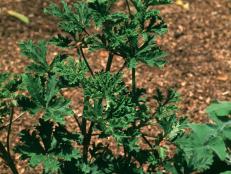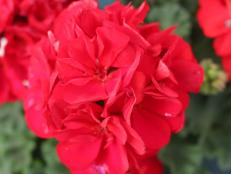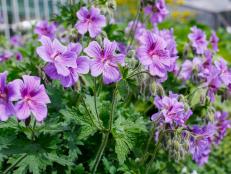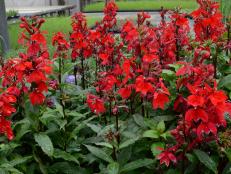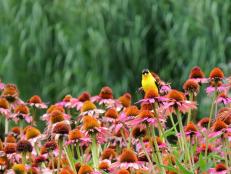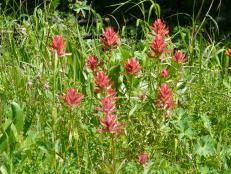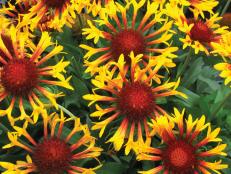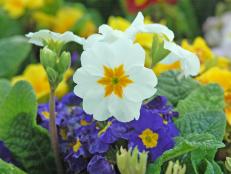Wild Geranium
Discover the beauty of a native geranium. It brings carefree color and versatility to any landscape.

PerennialResource.com
Take a walk on the wild side with wild geranium. Botanically this perennial bloomer is known as Geranium maculatum. Commonly, it has a host of colloquial names, including cranesbill or cranesbill geranium, alum root, wild cranesbill, spotted geranium and wood geranium. Whatever you call it, this native wildflower brings beauty to any landscape.
Wild geranium is native to Eastern North America, growing from Southern Ontario to Georgia and west to eastern Oklahoma and the Dakotas. Hardy in Zones 3 to 8, Geranium maculatum is a tough plant and adapts to various growing conditions. In its native habitat, you’ll find wild geranium in woodlands and shady roadsides. In the home garden, it thrives in full sun to part shade.
Give wild geranium soil with plenty of organic matter, much like you’d find in a woodland, where soil is humusy and rich with fallen, composting leaves. Plants grow best when they have plenty of moisture. You’ll get the best flowering when you give wild geranium a spot with more sun and ample water. Too much sun and not enough water leads to yellow leaves that drop prematurely. If plants get enough moisture, they’ll keep their leaves all season long. If not, plants tend to go dormant.
Flowers appear on wild geranium plants in late spring to early summer, over a period of six to seven weeks. The flowering window lengthens when temperatures stay on the cool side. Flowers appear in loose clusters above the deep green lobed leaves and face upward as they open.
Most often blooms unfurl in shades of lilac or pink, but occasionally you’ll see a plant with dark purple or even white blossoms. The petals have darker colored lines that act as nectar guides for pollinating insects. Wild geranium is a terrific plant for beckoning pollinators, including native bees, syrphid flies, bumblebees and honeybees.
There’s no need to deadhead wild geranium, because plants typically only flower once per growing season. About a month after blooming, seed capsules appear, which give rise to the common name cranesbill geranium. The seed capsule has a long central piece attached to a base. The whole thing resembles a crane head with its long beak. In Greek, the word geranium actually means crane. When seeds are ripe, the capsules explode, tossing seeds 10 to 30 feet.
Wild geranium grows in colonies. It naturalizes readily when it’s happy, but it’s not invasive. Plants usually grow about 18 to 24 inches tall and 12 to 18 inches wide. Choose other wildflowers to grow with wild geranium. Good companions include variegated solomon’s seal, ferns, celandine poppy, shooting star, trillium, columbine and woodland phlox.







